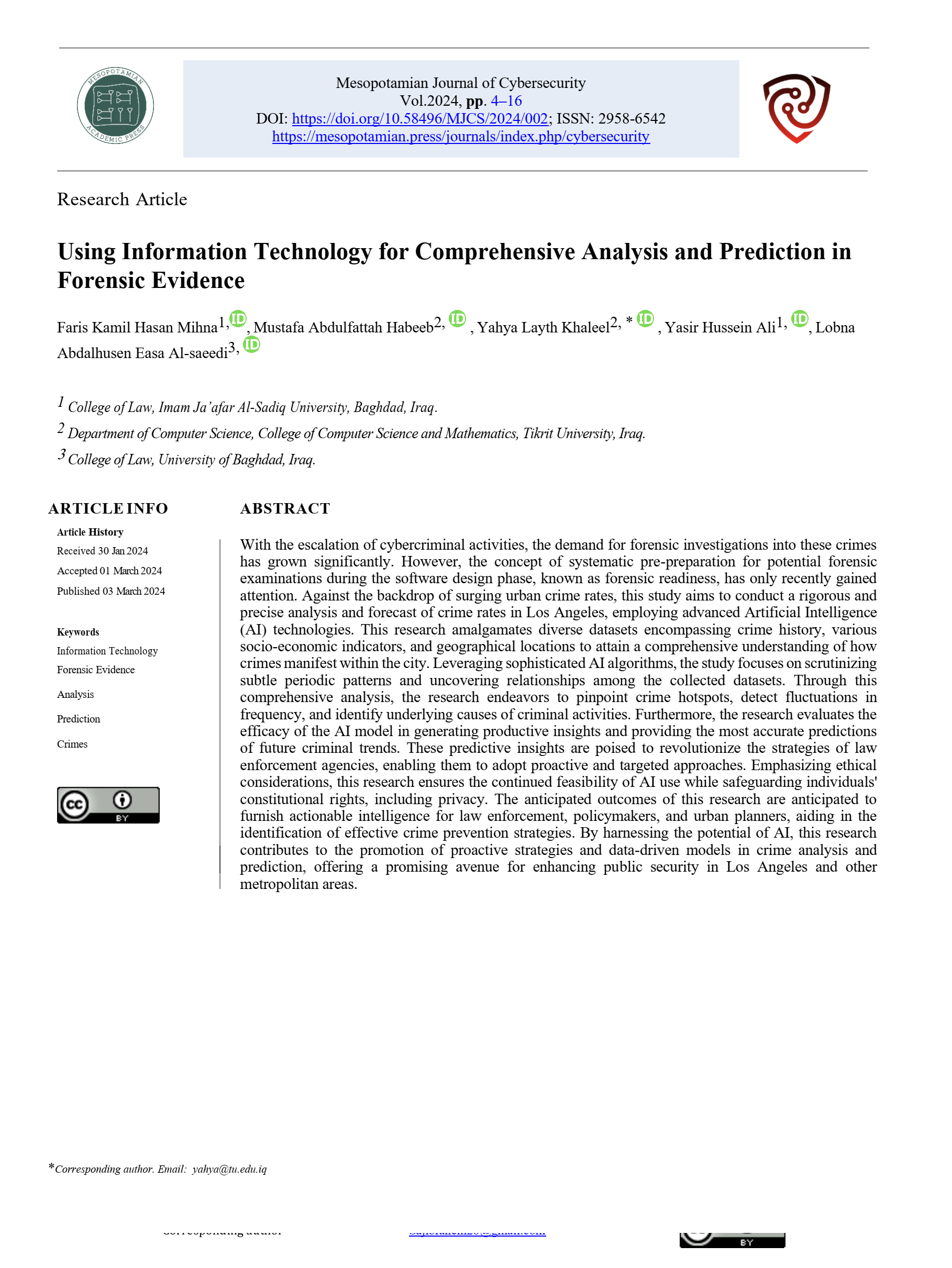Using Information Technology for Comprehensive Analysis and Prediction in Forensic Evidence
Main Article Content
Abstract
With the escalation of cybercriminal activities, the demand for forensic investigations into these crimes
has grown significantly. However, the concept of systematic pre-preparation for potential forensic
examinations during the software design phase, known as forensic readiness, has only recently gained
attention. Against the backdrop of surging urban crime rates, this study aims to conduct a rigorous and
precise analysis and forecast of crime rates in Los Angeles, employing advanced Artificial Intelligence
(AI) technologies. This research amalgamates diverse datasets encompassing crime history, various
socio-economic indicators, and geographical locations to attain a comprehensive understanding of how
crimes manifest within the city. Leveraging sophisticated AI algorithms, the study focuses on scrutinizing
subtle periodic patterns and uncovering relationships among the collected datasets. Through this
comprehensive analysis, the research endeavors to pinpoint crime hotspots, detect fluctuations in
frequency, and identify underlying causes of criminal activities. Furthermore, the research evaluates the
efficacy of the AI model in generating productive insights and providing the most accurate predictions
of future criminal trends. These predictive insights are poised to revolutionize the strategies of law
enforcement agencies, enabling them to adopt proactive and targeted approaches. Emphasizing ethical
considerations, this research ensures the continued feasibility of AI use while safeguarding individuals'
constitutional rights, including privacy. The anticipated outcomes of this research are anticipated to
furnish actionable intelligence for law enforcement, policymakers, and urban planners, aiding in the
identification of effective crime prevention strategies. By harnessing the potential of AI, this research
contributes to the promotion of proactive strategies and data-driven models in crime analysis and
prediction, offering a promising avenue for enhancing public security in Los Angeles and other
metropolitan areas.
Article Details
Issue
Section

This work is licensed under a Creative Commons Attribution 4.0 International License.




